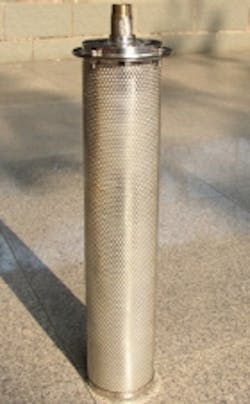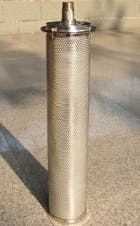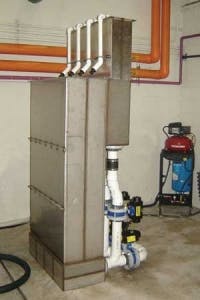Modified Fiber Technology: New Approach to Produced Water Treatment
By Cory Lewis and Feiyu Ma
In the production of oil, the number of barrels of water produced as a byproduct of drilling can be anywhere from 1 to 50 times the number of barrels of oil produced, depending on the formation’s geographical location and maturity. The treatment of this produced water in an efficient and economic way is integral in maintaining the lifespan of an oilfield.
In the past, treating produced water has been achieved by using evaporation ponds. However, in an effort to find a more environmentally friendly method, many new technologies have been developed in recent decades. Crude oil is the most difficult constituent of produced water to remove in most cases. It consists of four types of hydrocarbons: alkanes, cycloalkanes, aromatic hydrocarbons, and asphaltenes. The asphaltenes have a very viscous and sticky consistency and have proven to be difficult to efficiently remove from water.
The system uses a mix of fibers with either oleophobic or oleophilic properties. A fiber with oleophobic properties has been chemically altered to repel oils, while a fiber with oleophilic properties has been chemically altered to attract oils. The system uses these fibers in tandem. As small oil particles are attracted to the oleophilic fibers, droplets form and grow in diameter. When they become large enough, they are repelled by the adjacent oleophobic fiber. The droplets are at that point large enough to float to the surface on their own to be removed.
This is different than other coalescent technologies currently used since it can remove the oil in a much shorter time. The fibers are capable of lowering the concentration of oil in produced water from levels as high as 1000 ppm to below 1 ppm.
One application of this technology is to use the oleophobic fiber in the form of modified-fiber balls as a filter media. Many fiber balls, approximately 40 mm each, are placed within a tank and when compressed can offer precision up to 2-5µm removal of oils and suspended solids.
The produced water is fed into the tanks and then compressed through the media by vertical plungers. Once the head in the system reaches its limit, the system is backwashed.
Despite a high loading of suspended solids and oil, the media will not become fouled or blocked since the fibers are continuously repelling the oil. The fiber ball application is excellent for treating wastewater and produced water with high amounts of suspended solids.
In another application, these fibers are used together in the form of a filter cartridge to act as a self cleaning filter. The filter is achieved by winding the two fibers adjacent to one another. The filter cartridges are placed inside pressurized tanks and water is pumped vertically through the filters. The advantage of this application is that the filter actually cleans itself, meaning that it requires no backwashing and can last multiple years before needing to be replaced.
This modified fiber technology has been used to successfully treat produced water in many different applications. Since the modified fibers are oil selective, they are particularly attractive for offshore applications, where oil and grease is the primary constituent of concern.
Case Study
Offshore platforms usually have many factors to consider when treating produced water, but the main factors are space and efficiency. Since the space on offshore platforms is both incredibly limited and expensive, every foot counts.
At an offshore oil platform in Southern China, a treatment system using the modified fibers was able to reduce the required amount of space by 20%. The influent contained 30 ppm of suspended solids and 20-500 ppm of oil for a flow of 1650 gpm. The system was able to deliver treated water with less than 10 ppm of oil and less than 5 ppm of suspended solids. This allowed the platform to directly discharge the treated water into the ocean meeting and exceeding discharge limits.
About the Authors: Cory Lewis, with a B.S. Degree in Civil Engineering, is a Sales and Applications Engineer for General Technologies SPC with a focus on oil water separation technologies. Feiyu Ma, P.E. MS.Che.E. is the President of General Technologies and has over 17 years of experience in the water treatment industry.


